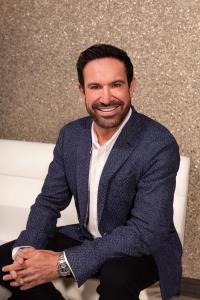Sensitivity of Sound Waves Provides Important Supplementary Testing Options, LabFinder Medical Director Dr. Kamila Seilhan Offers Tips
— Dr. Kamila Seilhan
NEW YORK, NY, UNITED STATES, October 5, 2023 /EINPresswire.com/ — Mammography remains the gold standard for finding tumors and other abnormalities in breast tissue, but an increasing number of studies show use of sound waves (ultrasound) as a supplement to mammography can significantly improve detection, says Dr. Kamila Seilhan, DO, medical director for www.LabFinder.com.
“Increasing evidence indicates ultrasound enables a doctor to look more closely at a suspicious area captured on a mammogram; determine if a breast lump is solid, suggesting possible cancer, or simply a cyst; and better locate the position of the tumor so that a follow-up biopsy can be performed,” says Dr. Seilhan, an experienced internist.
Nevertheless, “mammography remains the primary imaging modality for breast cancer screening and, to this day, is the only modality proven to reduce breast cancer mortality in randomized controlled trials,” Dr. Seilhan says.
Of course, mammography does have its limitations in certain instances. Unlike ultrasound, which depends on high-frequency sound waves, mammography employs ionizing radiation to create two- or three-dimensional images of the breast and, therefore, is contraindicated in the testing of pregnant women and in young women – under age 25 – whose exposure to radiation should be avoided.
Ultrasound technology also offers necessary testing sensitivity and specificity in symptomatic women under age 40 when mammogram yield is low due to dense breast tissue and in women who prefer ultrasound to a mammogram, Dr. Seilhan states.
As important as the testing method is the ability of physicians or radiology staff to interpret the breast images. Dr. Seilhan points to an online radiology article in which authors write, “To accurately, efficiently, and confidently…identify a mammographic abnormality, the personnel who perform [a supplementary] breast [ultrasound] examination should be familiar with mammographic imaging. Furthermore, the ultrasound examiner should be able to review the mammogram and identify internal landmarks that can be cross correlated with the ultrasound.
Finally, by confirming the mammographic landmarks sonographically, the examiner should be able to pinpoint the location of the mammographic abnormality in the breast with ultrasound and consequently be able to explain the etiology of [what may be a] puzzling mammographic finding.”
“If a medical testing center or doctor’s office does not have sophisticated enough sonographic testing equipment for optimal imaging and localization of an abnormality or lacks experience in cross correlating what is seen on a sonogram with what has been found in a patient’s mammogram, then accurate interpretative results can be delayed,” Dr. Seilhan says.
Avoiding delays in reporting of testing results to anxious patients is precisely why LabFinder was established. The company’s mission is to make access to medical tests performed at quality centers, as well as test results and personal health information, quick, simple, and understandable, explains its co-founder, cardiologist Robert Segal MD.
LabFinder serves as an online scheduling platform for all patient laboratory and radiology appointments. It connects patients, doctors and lab and radiology centers for a seamless medical experience; offers timely test scheduling; and serves as one central repository for users’ testing results. Most importantly, test results are released simultaneously to patient and clinician and are often available in as little as 24 hours or less, giving both the physician and the patient earlier opportunity to review and evaluate findings and take any needed follow-up action.
An ultrasound is a painless, noninvasive test. It can be performed in the doctor’s office by a physician or technician – a sonographer – using a hand-held device called a transducer. A clear, conductive gel, which helps transmit sound waves through the skin, is first applied to the breast; the transducer is then moved gently across the skin to create images that can be viewed on a computer monitor in real time. Specifically, sound waves interact with the internal structures under the skin, and the transducer records pitch and direction of the waves. An ultrasound examination with a mobile transducer takes about 20 minutes to 30 minutes to complete.
In some instances, a physician may opt to perform an automated ultrasound examination. Testing is done by machine with a fairly large transducer. The examination takes only about five minutes to complete.
A major drawback of the in-office, one-person approach is that scans of some importance may be disregarded if the individual conducting the testing is not sufficiently experienced in interpreting ultrasound images, Dr. Seilhan warns.
Fortunately, advancements in technology have increased ultrasound’s sensitivity and detection of abnormalities not initially recognized on mammograms. Dr. Seilhan notes the evolution of sono-elastography, which “utilizes sound waves for assessing the mechanical properties of tissues such as stiffness and elasticity in response to mechanical pressure on tissue,” according to radiopaedia.org (bit.ly/44cZClM). She also cites recent development of a wearable ultrasound scanner – a patch-like device – that can be attached to a bra, provide “deep tissue imaging” of the breast, and while it could be a great tool for imaging, it was only tested in a pilot study. The device was reported in a study published July 2023 in Science Advances (bit.ly/3qDD4gh).
“Breast cancer is nearly 100 percent curable if diagnosed in early stages, according to cancer experts, but survival can fall as low as 25 percent if malignancies are discovered too late. That is why these continuing improvements in medical testing of the breast are so welcome,” Dr. Seilhan says.
For women whose mammograms call for follow-up testing and for those whose age or condition requires an alternative to mammography, Dr. Seilhan this advice:
· Primary ultrasound of the breast is proving as functional and practical as mammography in detecting abnormalities in the tissue.
· If mammogram results indicate need for supplementary ultrasound, go forward with the additional testing. Supplementary ultrasound can find occult tumors or ease a patient’s mind by indicating a breast mass is merely a cyst – not a potentially cancerous tumor.
· Plan on resuming your normal activities once an ultrasound scan has been performed. The test requires no down time.
· Find out who will be interpreting your ultrasound images and how those images will be cross correlated with your mammogram. In such cases, experience counts.
Bio: Kamila Seilhan DO is a New York City-based internal medicine specialist who has been in practice for more than 20 years. She is board-certified by the American Board of Internal Medicine. In addition to her practice, she serves as medical director of www.LabFinder.com.
About: LabFinder is a consumer-facing platform that transforms the patient experience through seamless lab & radiology testing, guiding patients to conveniently located testing centers, handling appointment bookings, offering telehealth services, and allowing patients to review their test results all in one place. LabFinder supports patients through their care journey from booking to billing—reducing expenses, hurdles, and frustrations. www.labfinder.com.
Contact: www.mcprpublicrelations.com
Melissa Chefec
MCPR, LLC
+1 203-968-6625
[email protected]
![]()
Originally published at https://www.einpresswire.com/article/659664023/ultrasound-advancing-in-breast-tumor-detection
The post Ultrasound Advancing in Breast Tumor Detection first appeared on Beauty Ring Magazine.
Beauty - Beauty Ring Magazine originally published at Beauty - Beauty Ring Magazine




